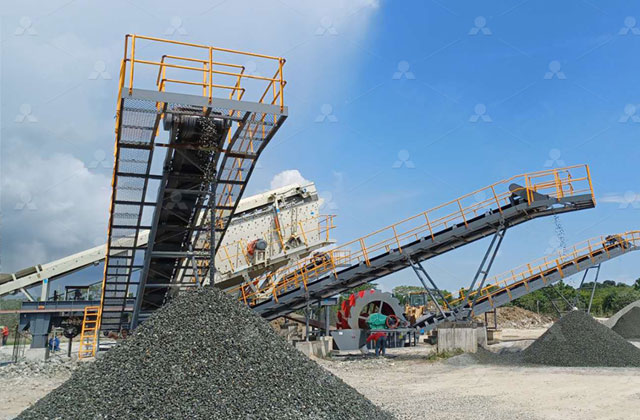Mining conveyor systems are essential for the efficient transportation of materials across the mining operation. These systems are composed of various components, each playing a crucial role in ensuring the smooth and continuous movement of materials from one point to another. Below is a breakdown of the key components that make up a mining conveyor system:

1. Conveyor Belts
The conveyor belt is the most integral part of the conveyor system. It is the surface on which materials are carried from one point to another. Conveyor belts are typically made from materials such as rubber, PVC, or fabric, and are chosen based on the type of material being transported and the environment in which the conveyor operates. For heavy-duty mining operations, steel-cord reinforced belts are often used to provide extra strength and durability.
2. Pulleys
Pulleys are used to guide and support the conveyor belt. They are found at both the tail and head of the conveyor, with the head pulley located at the discharge point and the tail pulley located at the loading end. Pulleys serve multiple purposes, including turning the belt, maintaining tension, and guiding the material. The head pulley is often powered, providing the necessary force to move the belt.
3. Idlers
Idlers are cylindrical rollers that support the conveyor belt along its length. They are strategically placed to prevent the belt from sagging and ensure smooth running. The most common types of idlers include carrying idlers (which support the load), return idlers (which support the empty belt), and impact idlers (placed in areas where the load material is likely to cause damage to the belt). Properly spaced and functioning idlers ensure minimal wear and tear on the conveyor system.
4. Conveyor Frame
The conveyor frame is the structure that supports the entire conveyor system, including the belt, pulleys, and idlers. It is typically made from steel or aluminum, with a robust design to withstand the harsh conditions of a mining environment. The frame must be properly aligned to ensure the belt runs smoothly and does not derail.
5. Drive System
The drive system is responsible for powering the conveyor and moving the belt. It typically consists of a motor, gearbox, and coupling. The motor provides rotational energy to the system, while the gearbox adjusts the speed and torque to match the operational requirements of the conveyor. The drive system ensures that the conveyor belt moves at a consistent speed, crucial for maintaining efficiency in mining operations.
6. Tensioning System
The tensioning system is used to maintain proper tension on the conveyor belt. This is vital because if the belt is too tight, it can cause excessive wear, and if it’s too loose, it can slip or derail. Tensioning systems can be manual or automatic, with the automatic systems adjusting the tension dynamically based on factors such as load, speed, and wear.
7. Conveyor Chutes
Chutes are used for loading and unloading materials onto or from the conveyor system. These are typically designed to minimize material spillage, wear on the belt, and blockages. The design of the chute is important to ensure a smooth flow of material and avoid disruptions in the conveyor’s operation.
8. Conveyor Control System
The conveyor control system manages the operation of the entire system. This includes speed controls, safety alarms, and monitoring systems that provide real-time data about the condition of the belt, motor, and other components. Control systems are essential for ensuring the safe and efficient operation of the conveyor, allowing for quick adjustments if there are any issues or disruptions.
9. Safety and Maintenance Components
Safety is a key concern in mining operations, and various safety components are incorporated into conveyor systems, such as emergency stop buttons, safety guards, and fire suppression systems. Regular maintenance of these components is crucial to avoid breakdowns and ensure the longevity of the conveyor system.
In conclusion, a mining conveyor system is a complex arrangement of components that work together to efficiently transport materials in a mining environment. The careful selection, design, and maintenance of each component are critical for the successful operation of these systems, reducing downtime and enhancing productivity.
